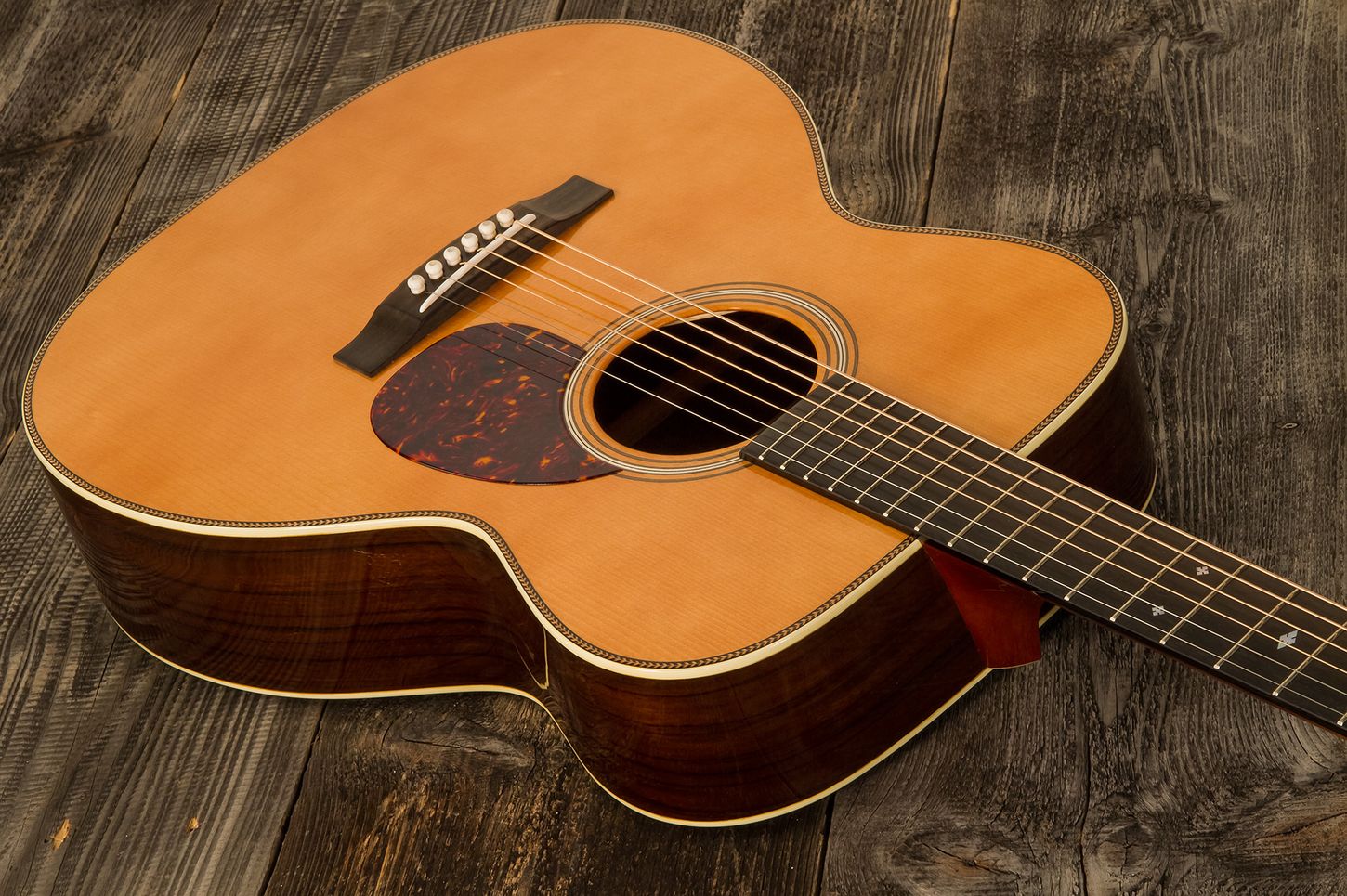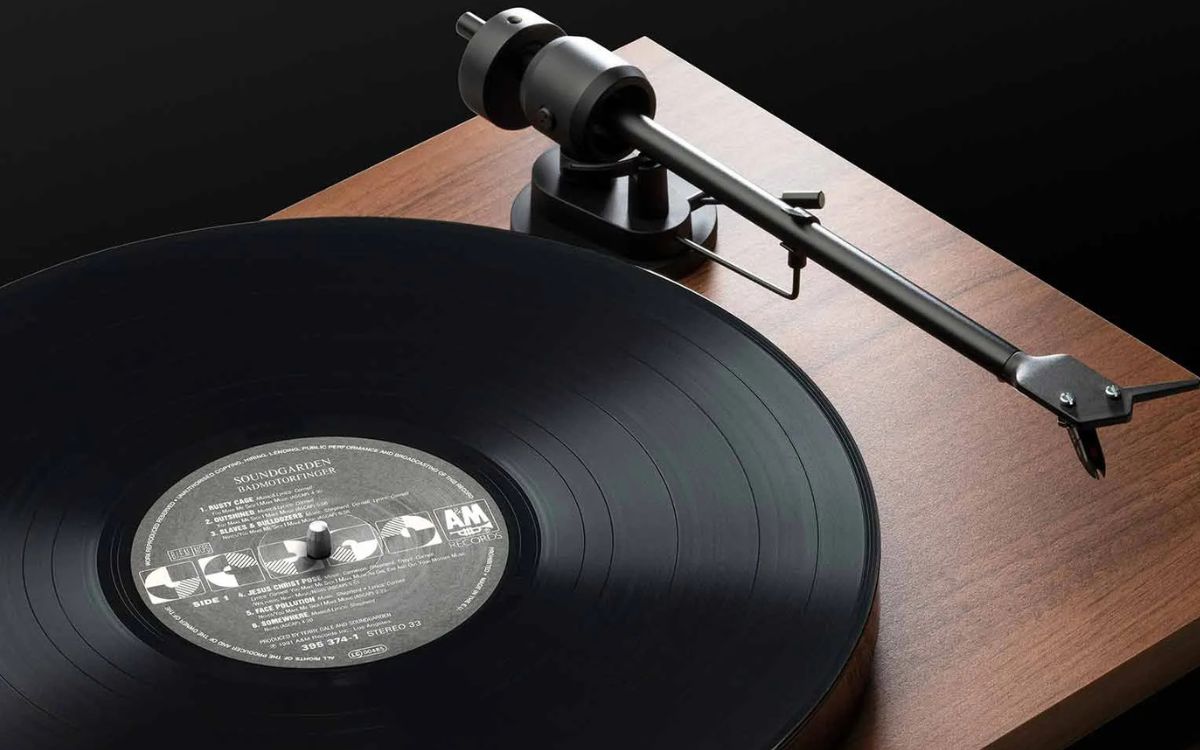Home>Instruments>Guitar>How To Get Better At Guitar


Guitar
How To Get Better At Guitar
Published: February 12, 2024
Learn how to improve your guitar skills with our expert tips and techniques. Master the guitar and become a pro player with our comprehensive guide.
(Many of the links in this article redirect to a specific reviewed product. Your purchase of these products through affiliate links helps to generate commission for AudioLover.com, at no extra cost. Learn more)
Table of Contents
Introduction
So, you've picked up the guitar and you're ready to take your skills to the next level. Whether you're a complete beginner or an intermediate player looking to refine your technique, there are numerous strategies you can employ to enhance your abilities and become a more proficient guitarist. In this guide, we'll explore various tips and techniques that can help you improve your guitar playing and take your musical journey to new heights.
Playing the guitar is a rewarding and fulfilling pursuit that offers endless opportunities for creativity and self-expression. Whether you aspire to strum along to your favorite songs, write your own music, or perform in front of an audience, honing your skills is essential to achieving your musical goals. While the path to mastery may seem daunting at times, with dedication, patience, and the right approach, you can make significant strides in your guitar playing journey.
Throughout this article, we'll delve into a range of practical strategies and concepts designed to elevate your guitar playing. From mastering chord progressions and refining your fingerpicking technique to understanding basic music theory and exploring different genres, each aspect plays a crucial role in your overall development as a guitarist. Additionally, we'll discuss the importance of regular practice, the benefits of using a metronome, and the value of seeking professional instruction to guide you along the way.
Whether you're drawn to the soulful melodies of blues, the high-energy riffs of rock, or the intricate fingerstyle patterns of folk, the guitar offers a versatile canvas for musical expression. No matter your preferred style or genre, the fundamental principles of becoming a better guitarist remain consistent. By embracing a combination of dedication, education, and exploration, you can unlock your potential and embark on a fulfilling journey of musical growth.
So, grab your guitar, tune up those strings, and let's dive into the strategies that will help you elevate your guitar playing and unleash your full musical prowess. Whether you're practicing in your bedroom, jamming with friends, or performing on stage, the insights and techniques outlined in this guide will serve as valuable tools in your ongoing quest to become a better guitarist.
Practice Regularly
Consistent and dedicated practice is the cornerstone of improvement for any guitarist. Regular practice not only helps you develop muscle memory and dexterity but also enhances your overall understanding of the instrument. Whether you’re aiming to master a challenging solo, improve your rhythm playing, or simply build fluency in your fretting hand, committing to a structured practice routine is essential.
When it comes to practicing, quality often outweighs quantity. It’s more effective to practice for shorter, focused sessions than to aim for long, unfocused ones. Set aside dedicated time each day to work on specific aspects of your playing, whether it’s scales, chord changes, or learning new songs. By breaking down your practice sessions into manageable segments, you can maintain focus and make tangible progress in each area.
Additionally, setting specific goals for your practice sessions can provide direction and motivation. Whether you aim to increase your playing speed, memorize a new chord progression, or improve your improvisational skills, having clear objectives can help you stay on track and measure your progress over time.
It’s also important to vary your practice routine to keep things engaging and challenging. Incorporating warm-up exercises, technical drills, and creative exploration into your practice sessions can help you develop a well-rounded skill set and prevent monotony from setting in.
Furthermore, don’t underestimate the value of consistent review. Revisiting previously learned material not only reinforces your skills but also allows you to identify areas that may need further attention. As you progress, you’ll find that regular practice not only enhances your technical proficiency but also deepens your musical understanding and creativity.
Remember, progress in guitar playing is a gradual journey, and patience is key. Celebrate your achievements along the way, no matter how small they may seem. By cultivating a disciplined and consistent practice regimen, you’ll undoubtedly see your skills flourish and your musical aspirations come within reach.
Learn Basic Music Theory
Understanding basic music theory is a transformative step for any guitarist. While it may seem daunting at first, delving into the fundamentals of music theory can significantly enhance your playing, improvisation, and compositional abilities. By grasping essential concepts such as scales, chords, and rhythm, you’ll gain a deeper insight into the language of music, enabling you to communicate and express yourself more effectively through the guitar.
One of the fundamental elements of music theory is the study of scales. Familiarizing yourself with different scales, such as the major scale, minor scale, and pentatonic scale, provides a framework for creating melodies, improvising solos, and understanding the harmonic structure of songs. Additionally, learning the intervals within scales can aid in developing ear training and melodic phrasing.
Another crucial aspect of music theory for guitarists is chord construction. Understanding how chords are formed, their relationships within a key, and their harmonic function empowers you to navigate chord progressions, create compelling rhythm parts, and even compose your own music. Moreover, delving into chord extensions and variations can add depth and color to your playing, allowing you to infuse your music with rich harmonic textures.
Rhythm is equally vital in music theory, and for guitarists, mastering rhythmic patterns, time signatures, and syncopation can elevate your playing to new heights. Developing a strong sense of rhythm and timing not only enhances your ability to groove and accompany other musicians but also opens up avenues for creative rhythmic exploration and expression.
As you delve into music theory, it’s essential to apply your newfound knowledge directly to the guitar. Practice incorporating scales, chords, and rhythmic concepts into your playing, and explore how they can be utilized in different musical contexts. By bridging the gap between theory and practical application, you’ll internalize these concepts and integrate them seamlessly into your musical repertoire.
Ultimately, learning basic music theory equips you with a set of tools to analyze, interpret, and create music with greater depth and intention. It serves as a springboard for musical exploration and empowers you to communicate fluently within the language of music, fostering a deeper connection to your instrument and the music you create.
Master Chord Progressions
Chord progressions form the harmonic backbone of countless songs across various musical genres, making them a vital aspect of a guitarist’s skill set. Mastering chord progressions not only enhances your ability to accompany songs but also provides a foundation for improvisation, songwriting, and understanding the structural dynamics of music.
Begin by familiarizing yourself with common chord progressions used in popular music, such as the I-IV-V progression or the vi-IV-V-I sequence. Understanding the relationship between chords within a progression and their function within a key enables you to anticipate harmonic changes and navigate song structures with ease.
Furthermore, exploring different voicings and inversions of chords within a progression can add variety and depth to your playing. Experiment with alternative fingerings and chord shapes to discover unique sonic textures and create more nuanced accompaniment patterns.
As you delve deeper into mastering chord progressions, consider the emotional impact of different progressions and how they contribute to the mood of a song. Certain progressions evoke feelings of tension, resolution, melancholy, or upliftment, and being attuned to these nuances can inform your expressive interpretation of music.
Moreover, understanding the concept of functional harmony – the relationship between chords based on their role within a key – can provide valuable insights into how chord progressions create movement and convey musical narratives. This knowledge can be applied not only to interpreting existing songs but also to composing your own music with intention and purpose.
Ultimately, mastering chord progressions involves developing a keen ear for harmonic movement, honing your ability to transition smoothly between chords, and internalizing the underlying principles of musical tension and release. By immersing yourself in the study and application of chord progressions, you’ll expand your musical vocabulary and cultivate a deeper appreciation for the art of harmony in guitar playing.
Improve Your Fingerpicking Technique
Fingerpicking is a versatile and expressive approach to playing the guitar, enabling you to create intricate melodies, rich harmonies, and rhythmic patterns with your fingertips. Whether you’re drawn to folk, blues, classical, or contemporary acoustic styles, refining your fingerpicking technique can greatly enhance your musicality and expand your sonic capabilities.
Begin by focusing on the fundamentals of fingerpicking, such as proper hand positioning and finger placement. Establishing a solid foundation in fingerpicking posture and technique lays the groundwork for developing speed, accuracy, and control in your playing.
As you progress, explore various fingerpicking patterns and exercises to build dexterity and coordination. Practicing patterns that involve alternating bass notes and melody lines, as well as incorporating thumb independence exercises, can help you navigate complex fingerstyle arrangements with fluency and precision.
Additionally, delve into the art of fingerstyle dynamics, mastering techniques such as finger rolls, arpeggios, and percussive elements to add depth and expression to your playing. Experiment with varying degrees of attack and finger pressure to imbue your fingerpicked passages with nuance and emotive power.
Furthermore, immersing yourself in the repertoire of renowned fingerstyle guitarists and studying their techniques can offer valuable insights and inspiration. Analyze the playing styles of artists such as Tommy Emmanuel, Andy McKee, and Chet Atkins, and incorporate elements of their approach into your own practice and performance.
Remember to practice fingerpicking across different musical genres, as each style presents unique challenges and opportunities for growth. Whether you’re navigating intricate classical compositions, exploring blues fingerpicking techniques, or adapting modern fingerstyle arrangements, embracing stylistic diversity can enrich your fingerpicking repertoire and expand your creative horizons.
Ultimately, improving your fingerpicking technique involves a combination of disciplined practice, attentive listening, and a willingness to explore new musical territories. By honing your fingerstyle skills, you’ll unlock the full expressive potential of the guitar and cultivate a captivating and distinctive approach to your playing.
Utilize Different Strumming Patterns
Mastering a diverse array of strumming patterns is a fundamental aspect of becoming a well-rounded guitarist. Whether you’re accompanying vocals, leading a band, or performing solo, the ability to employ varied and engaging strumming patterns enhances your rhythmic prowess and adds depth to your musical arrangements.
Begin by familiarizing yourself with basic strumming techniques, including downstrokes, upstrokes, and the use of a pick or fingers to achieve different tonal qualities. Developing a strong sense of timing and groove is essential, as it forms the foundation upon which diverse strumming patterns can be built.
Explore different rhythmic subdivisions, such as quarter notes, eighth notes, and sixteenth notes, and practice incorporating them into your strumming patterns. By mastering various subdivisions, you’ll have the flexibility to create dynamic and engaging rhythmic textures in your playing.
Experiment with syncopated strumming patterns to infuse your music with rhythmic complexity and energy. Syncopation involves accenting offbeat rhythms, adding a sense of forward motion and vitality to your strumming. Incorporating syncopated elements can elevate the rhythmic interest of your playing and captivate listeners with unexpected rhythmic twists.
Furthermore, delve into the world of fingerstyle strumming, which allows you to blend percussive elements, arpeggiated chords, and rhythmic flourishes into your playing. Fingerstyle strumming opens up a wealth of creative possibilities, enabling you to craft intricate and evocative rhythmic accompaniments while maintaining melodic and harmonic richness.
As you explore different strumming patterns, pay attention to the dynamics of your playing. Experiment with variations in volume, intensity, and articulation to imbue your strumming with expressive nuances. Utilizing dynamic contrasts within your strumming patterns can evoke a wide range of emotions and enhance the musical storytelling within your performances.
Ultimately, the ability to utilize different strumming patterns empowers you to shape the rhythmic landscape of your music with creativity and finesse. By honing your rhythmic skills and embracing a diverse repertoire of strumming techniques, you’ll elevate your guitar playing and infuse your musical expressions with captivating rhythmic vitality.
Explore Different Genres
Embarking on a journey through diverse musical genres is a transformative and enriching experience for any guitarist. Exploring different genres not only broadens your musical horizons but also deepens your understanding of various playing styles, techniques, and artistic expressions. Whether you’re drawn to the soulful blues, the high-energy realms of rock, the intricate melodies of jazz, or the rhythmic tapestries of world music, each genre offers a unique tapestry of sounds and playing approaches to discover and incorporate into your musical repertoire.
When delving into different genres, take the time to immerse yourself in the characteristic elements that define each style. Study the history, key artists, and iconic recordings within the genre, and pay attention to the distinctive playing techniques, chord progressions, and tonal qualities that shape its musical identity.
As you explore various genres, challenge yourself to learn and play songs from each style, embracing the nuances and intricacies that define them. By doing so, you’ll not only expand your technical proficiency but also internalize the stylistic nuances and musical idioms that are integral to each genre.
Moreover, don’t limit your exploration to the confines of your primary musical preferences. Venture into genres that may lie outside your comfort zone, as doing so can foster creativity, innovation, and a deeper appreciation for the diversity of musical expression. For example, if you’re primarily a rock guitarist, delving into the melodic intricacies of classical guitar or the rhythmic complexities of flamenco can offer fresh perspectives and expand your musical palette.
Embracing different genres also cultivates adaptability and versatility in your playing, enabling you to draw from a rich tapestry of musical influences and infuse your own compositions and improvisations with a broader range of colors and textures. The fusion of various genre elements can lead to the development of a unique and distinctive musical voice that transcends traditional stylistic boundaries.
Ultimately, exploring different genres not only enriches your guitar playing but also nurtures a deeper connection to the universal language of music. By embracing the stylistic diversity and artistic heritage of various genres, you’ll embark on a musical odyssey that fuels inspiration, creativity, and a lifelong passion for the boundless possibilities of the guitar.
Use a Metronome
Integrating a metronome into your practice routine can yield significant benefits for your guitar playing, fostering precision, rhythmic accuracy, and overall musical proficiency. A metronome serves as a steadfast guide, providing a consistent beat to help you develop a strong sense of timing, improve your rhythmic stability, and enhance your ability to play in sync with other musicians.
One of the primary advantages of using a metronome is its role in honing your internal sense of rhythm. By practicing with a metronome, you develop the ability to internalize and maintain a steady tempo, which is essential for cohesive ensemble playing, live performances, and studio recordings. This heightened rhythmic awareness not only benefits your individual playing but also contributes to the cohesion and tightness of musical collaborations.
Furthermore, a metronome can aid in building speed and dexterity in your playing. Gradually increasing the tempo while practicing scales, exercises, and challenging passages can push your technical limits and facilitate incremental growth in your playing speed. The disciplined use of a metronome can help you break through speed plateaus and achieve greater fluency and control over intricate musical passages.
Additionally, practicing with a metronome cultivates a disciplined approach to time management within your playing. It encourages you to maintain consistent and even note durations, develop precise rhythmic articulation, and execute complex rhythmic patterns with accuracy. These foundational skills are essential for executing tight, polished performances across various musical styles.
When using a metronome, it’s important to approach your practice sessions with patience and attentiveness. Start at a comfortable tempo and gradually increase the speed as your proficiency improves. Focus on playing in perfect synchrony with the metronome, ensuring that each note aligns precisely with the designated beats, subdivisions, and accents.
Ultimately, the metronome serves as a steadfast ally in your quest for rhythmic mastery and technical precision. By incorporating this invaluable tool into your practice regimen, you’ll develop a solid foundation in timing, rhythm, and tempo control, paving the way for confident and assured performances in a wide array of musical contexts.
Seek Professional Instruction
Enlisting the guidance of a skilled and experienced guitar instructor can profoundly impact your musical journey, providing personalized mentorship and valuable insights that accelerate your growth as a guitarist. Whether you’re a beginner seeking to establish a strong foundation or an intermediate player aiming to refine your skills, professional instruction offers tailored guidance, constructive feedback, and a structured learning environment that fosters continuous improvement.
One of the primary benefits of seeking professional instruction is the opportunity to receive personalized feedback and guidance tailored to your specific goals and skill level. A knowledgeable instructor can assess your strengths and areas for improvement, design customized lesson plans, and provide targeted exercises to address your unique needs, ensuring that you progress effectively and efficiently.
Moreover, professional instructors offer a wealth of expertise and knowledge honed through years of playing, performing, and teaching. They can impart valuable insights into technique, music theory, repertoire selection, and performance skills, equipping you with a comprehensive understanding of the instrument and its musical possibilities.
Professional instruction also cultivates accountability and motivation in your practice routine. Regular lessons provide structured milestones, encouraging consistent progress and practice. Additionally, the encouragement and support of a dedicated instructor can inspire you to push beyond your comfort zone, explore new musical avenues, and strive for continual growth as a guitarist.
Furthermore, working with a skilled instructor opens doors to a diverse range of musical styles, techniques, and playing approaches. Whether you’re interested in classical guitar, jazz improvisation, fingerstyle mastery, or rock soloing, a knowledgeable instructor can guide you through the nuances of each style, broadening your musical horizons and nurturing a well-rounded approach to guitar playing.
It’s important to approach professional instruction with an open mind and a willingness to absorb new knowledge and perspectives. Embrace the mentorship of your instructor, ask questions, and actively engage in the learning process. By doing so, you’ll glean invaluable insights, refine your musical sensibilities, and progress along a guided path toward mastering the guitar.
Ultimately, seeking professional instruction is a transformative investment in your musical development, providing a supportive framework for growth, personalized guidance, and a wealth of musical wisdom that propels you toward achieving your aspirations as a guitarist.
Stay Patient and Persistent
Mastering the guitar is a journey that demands patience, perseverance, and unwavering dedication. As you navigate the intricacies of learning and refining your skills, it’s essential to embrace a mindset of patience and persistence, understanding that progress unfolds gradually and that each step forward, no matter how small, contributes to your overall growth as a guitarist.
It’s natural to encounter challenges and obstacles along the path of musical development. Whether you’re grappling with complex chord changes, striving to internalize new techniques, or seeking to overcome performance anxiety, maintaining patience with yourself and your progress is paramount. Recognize that learning the guitar is a process that unfolds at its own pace, and that persistent effort and consistent practice yield tangible results over time.
Furthermore, maintaining a persistent attitude toward your practice and musical goals is crucial. Set realistic yet ambitious objectives, and commit to regular, focused practice sessions that align with your aspirations. Embrace the incremental nature of improvement, celebrating each milestone and breakthrough while understanding that setbacks and plateaus are natural components of the learning process.
Embrace the journey of learning the guitar with a sense of curiosity, humility, and resilience. Approach challenges as opportunities for growth, and view mistakes as valuable learning experiences that contribute to your development as a musician. Cultivate a mindset that values progress over perfection, understanding that the pursuit of mastery is a continuous, evolving endeavor.
Moreover, staying patient and persistent requires a commitment to self-compassion and self-care. Be kind to yourself as you navigate the rigors of practice and musical exploration. Recognize the significance of rest, relaxation, and rejuvenation, understanding that maintaining a balanced approach to your musical pursuits contributes to sustained motivation and creativity.
As you encounter moments of frustration or self-doubt, remind yourself of the joy and fulfillment that music brings to your life. Whether you’re strumming familiar chords, improvising melodic phrases, or composing your own songs, the act of creating music is a profoundly rewarding and transformative experience. Embrace the process of learning the guitar as a testament to your passion for music and a testament to your dedication to honing your craft.
Ultimately, staying patient and persistent as a guitarist is a testament to your commitment to artistic growth and self-expression. By nurturing these qualities within yourself, you’ll navigate the challenges of learning the guitar with resilience, grace, and an unwavering belief in your potential to achieve musical excellence.











